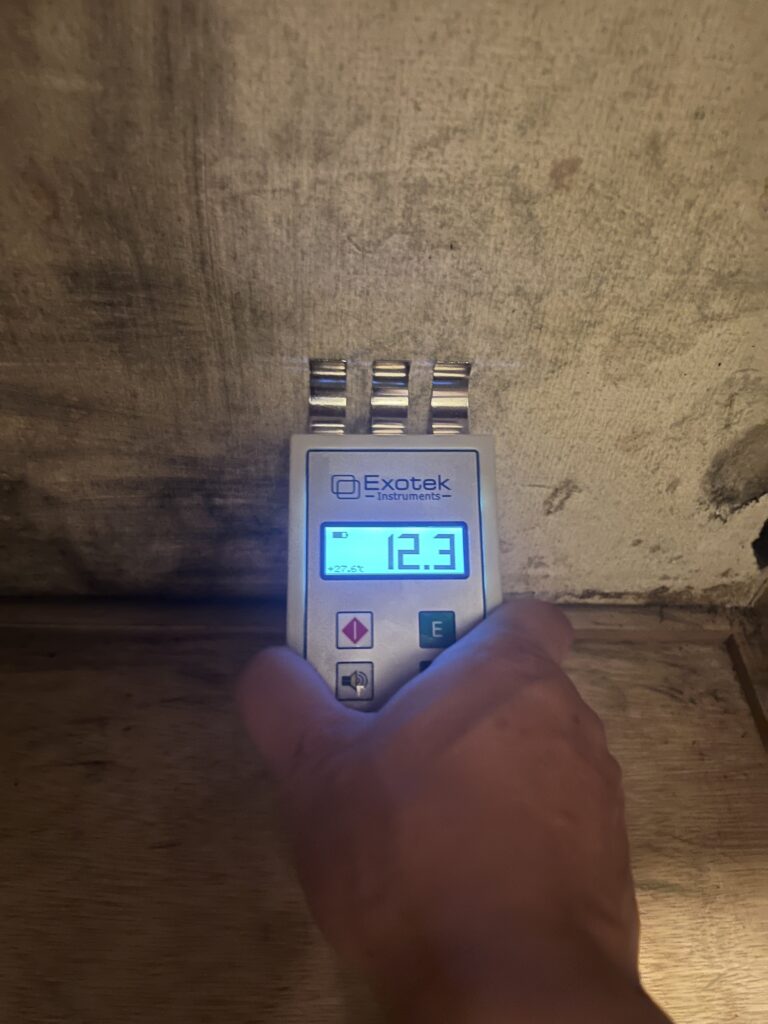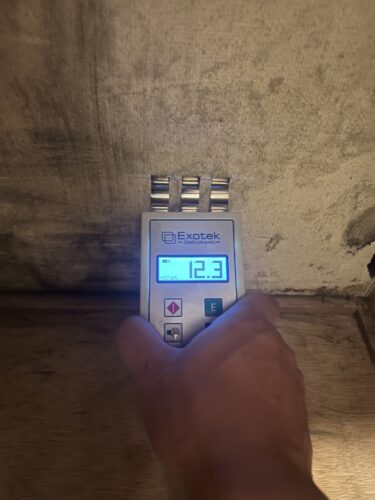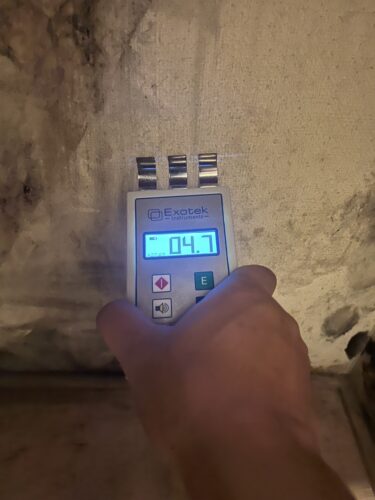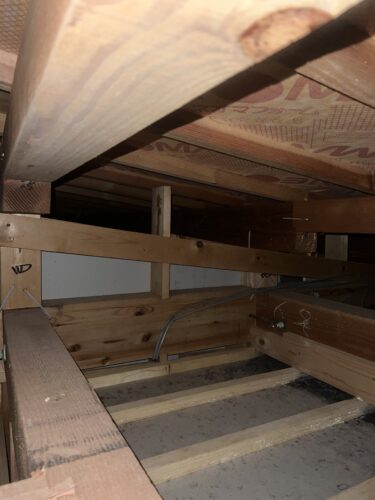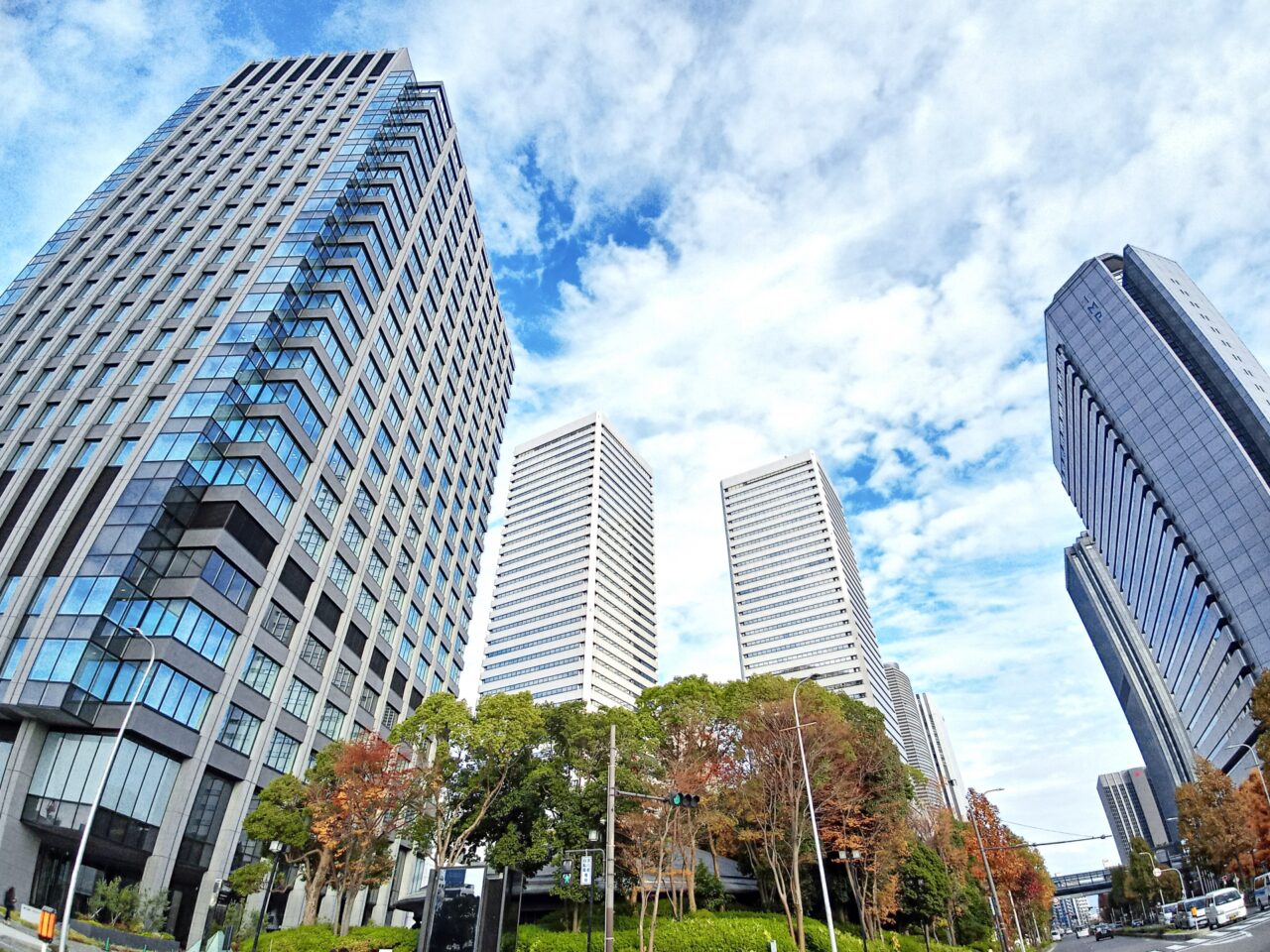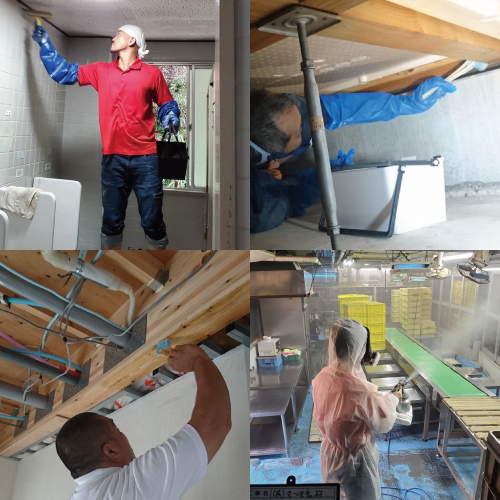Problem Statement
High-sealed, high-insulation public housing offers excellent energy efficiency and comfort but is prone to moisture retention, which can lead to mold damage. In particular, improper operation or lack of maintenance of 24-hour ventilation systems can cause internal condensation or negative pressure, allowing moisture intrusion that harms both health and the building.
What You Will Learn
This article explains the causes of mold in public housing, the specific moisture-retention mechanisms of high-insulation structures, and how to properly operate and inspect 24-hour ventilation systems. It also covers additional measures such as dehumidifiers, anti-mold building materials, and professional removal and prevention services.
Benefits of Reading
By reading this article, you will gain practical knowledge to prevent mold damage in public housing, protecting both your health and your building’s lifespan. You will be able to choose the right countermeasures—from daily ventilation and humidity control to professional anti-mold treatments—based on your specific situation.
Public housing refers to residential complexes or detached homes provided by public entities, many of which now use high-sealed, high-insulation construction. This design encloses the building with insulation and minimizes heat transfer through walls and windows. The result is outstanding energy efficiency and the ability to maintain comfortable indoor temperatures for longer periods. However, while this structure blocks external air intrusion, it also makes it harder for indoor air to escape naturally, which can trap humidity and lead to mold growth—especially if the 24-hour ventilation system is not properly operated or maintained. High-sealed, high-insulation homes resist outside temperature fluctuations, staying cooler in summer and warmer in winter. This increases heating and cooling efficiency, reducing utility costs. For example, during winter, indoor temperatures drop more slowly after turning off heating, lowering energy consumption when reheating the space. They also block outside noise, pollen, and fine particulate matter, helping to prevent allergies and respiratory problems. Additionally, even heat distribution throughout the home minimizes temperature differences between rooms, reducing the risk of heat shock—especially beneficial for elderly residents and small children. While airtight construction ensures comfort, it also reduces natural ventilation. Everyday activities—cooking, bathing, laundry, and even breathing—generate large amounts of water vapor. Without effective removal, moisture accumulates, causing condensation inside walls, behind furniture, and in other poorly ventilated areas. Internal condensation is particularly problematic because it is invisible; by the time it’s noticed, mold may have spread within insulation or structural materials. Left untreated, this can cause health issues such as allergies, asthma, and sick building syndrome, as well as shorten the building’s lifespan. Mold thrives when four conditions are met: warmth, humidity, nutrients, and oxygen. In high-sealed, high-insulation homes, warmth and oxygen are nearly constant, making humidity the key factor. Relative humidity above 60% for extended periods creates ideal growth conditions. Dust, skin oils, and other microscopic organic matter on building surfaces provide nutrients. Here are the three most common causes of mold in public housing. In winter, large temperature differences between indoors and outdoors cause condensation on surfaces like walls and windows. When it occurs inside walls—known as internal condensation—it is especially dangerous. Unlike surface condensation, it cannot be wiped away; wet insulation and wooden framing become breeding grounds for mold. Placing furniture flush against walls can also trap humid air, creating mold-prone microclimates. If the 24-hour ventilation system does not operate correctly, supply and exhaust airflow can become unbalanced, creating negative pressure indoors. In this state, moist outside air is drawn into the walls or floor cavities, where it condenses and fosters mold growth. Causes include clogged filters, blocked air inlets, and malfunctioning exhaust fans. Poor ventilation is not just a structural issue—it often results from daily habits. Examples include drying laundry indoors, turning off the bathroom fan immediately after bathing, or not using the range hood while cooking. In airtight homes, natural airflow is negligible, so these habits quickly build up moisture, increasing mold risk. Preventing mold requires controlling indoor temperature and humidity. In high-insulation homes, maintaining these conditions is critical because the building envelope traps both heat and moisture. The ideal indoor humidity is 40–60%, and the temperature should be around 20–25°C (68–77°F). Below 40% humidity, health problems such as dry skin, sore throats, and increased virus transmission risk occur. To keep conditions optimal, install hygrometers in every room. In winter, use humidifiers alongside heating; in summer or during the rainy season, use dehumidifiers or air conditioners in dehumidification mode. Bedrooms and closets—spaces that remain closed for long periods—require special attention. Ventilation system and air conditioner filters trap dust and pollen but can clog over time, reducing airflow and hindering moisture removal. Clean filters every 2–3 months, and more frequently after pollen or dust-heavy seasons. Remove filters, vacuum dust, wash gently in lukewarm water, and dry completely before reinstalling to prevent mold growth. Schedule professional inspections annually to check duct cleanliness and fan performance. In airtight homes, the 24-hour ventilation system is the primary means of introducing fresh air and removing humidity and airborne mold spores. If it’s not operated correctly, the system can fail to prevent mold—or even contribute to it. Ventilation works only when the balance between air supply and exhaust is maintained. If this balance is disrupted—such as when air inlets are blocked by furniture or curtains—negative or positive pressure can occur, leading to moisture intrusion or poor exhaust. Keep intake and exhaust vents unobstructed, and schedule regular airflow measurements by professionals to ensure the system operates as designed. Dust, pollen, insects, and airborne pollutants accumulate on vents and filters, reducing airflow. Clean every three months, and pay extra attention after pollen seasons or in autumn when leaves fall. Use a dry cloth or brush, or wash with mild detergent if necessary. Have ducts cleaned annually to prevent mold growth inside, which can spread spores through the ventilation system. In high-sealed, high-insulation homes, proper operation of the 24-hour ventilation system is essential—but not always sufficient. During the rainy season or in winter when outdoor humidity is high, ventilation alone may not lower indoor humidity. In these situations, supplementary measures can greatly reduce mold risk. Dehumidifiers are highly effective for removing moisture in high-humidity seasons or in rooms where air circulation is weak, such as bedrooms, closets, and bathrooms. Compressor-type dehumidifiers work best in summer and the rainy season, while desiccant-type units are ideal in colder winter months. Some modern air purifiers combine dehumidification or humidification functions, allowing flexible year-round use. Choose air purifiers with filters designed to capture mold spores and with anti-bacterial or anti-mold coatings for added protection. Moisture prevention is not just about appliances—it also involves room layout and material choices. Keep furniture at least 5 cm (2 inches) away from walls to allow airflow. Place slatted boards under closet storage to promote ventilation. Use anti-mold wall coverings, paints, or moisture-resistant sheets, especially in high-risk areas such as bathrooms or north-facing walls. While houseplants can enhance aesthetics, be mindful that watering increases humidity; adjust the number and placement accordingly. Even with preventive measures, mold may still appear. In airtight homes, mold often grows in hidden areas like inside walls or under floors, and by the time it’s discovered, it may be widespread. Early detection and proper response are critical. For minor mold growth, commercial mold removers or alcohol sprays can be used. In bathrooms, applying the agent, letting it soak, and scrubbing with a brush can remove surface mold. However, surface cleaning alone does not eliminate mold roots embedded deep in materials. Mold inside wallpaper backing, insulation, or wood cannot be fully removed with store-bought products and often reappears. Strong chlorine-based cleaners may also damage building materials or cause irritation, so they must be used carefully. When mold damage is extensive or caused by internal condensation, professional services are essential. Specialists use dedicated chemicals and equipment to remove mold from both visible and hidden areas. Techniques like the MIST Method® can eradicate mold without damaging delicate materials—ideal for high-insulation homes. After removal, professionals apply anti-mold treatments and may recommend improvements such as ventilation balance adjustments, insulation repairs, or moisture-proof construction to prevent recurrence. Mold damage is not just an aesthetic issue—it can seriously affect both human health and building integrity. In airtight homes, hidden mold is particularly dangerous as it can spread unnoticed. Mold releases spores into the air, which, when inhaled, can cause allergic rhinitis, asthma, dermatitis, eye irritation, and chronic coughing. Immunocompromised individuals—including the elderly, infants, and those with chronic illnesses—are at risk for serious fungal infections like aspergillosis and candidiasis. Mold can also produce mycotoxins, which may cause fatigue, reduced concentration, and headaches after prolonged exposure. Mold decomposes organic materials like wood, paper, and fabrics, weakening structural components in wooden buildings. Moisture and mold can also attract termites, compounding the damage. In concrete buildings, mold can deteriorate insulation and interior finishes, and trapped moisture may corrode embedded metal components. Repairs can be costly if the problem is detected late, making early action crucial. Regular inspections help detect mold early and address issues before they worsen. In high-insulation homes, moisture tends to accumulate, making routine checks especially important. Monitor humidity and temperature daily in each room (ideal: 40–60% humidity, 20–25°C / 68–77°F) Check for condensation on windows and frames Inspect behind furniture and in closet corners for moisture buildup Note any musty or sour odors indicating mold presence Confirm the 24-hour ventilation system is running continuously Ensure air inlets and outlets are not blocked by furniture or curtains Clean filters every 2–3 months to prevent clogging Check for unusual odors from vents or ducts Inspect bathroom ceilings, walls, and fan housings for mold Check floors and wall seams in washrooms and laundry areas for discoloration Look for moisture or mold under kitchen sinks and around drains Inspect washing machine gaskets and hoses for mold buildup Certain times of year pose greater mold risks. Recognizing these periods and adjusting your prevention measures can keep mold at bay year-round. Rainy Season (June–July): Warm, humid conditions accelerate mold growth indoors. Summer (August): High temperatures and humidity levels provide ideal mold conditions. Winter (December–February): Internal condensation from heating can feed hidden mold. Before the rainy season, clean ventilation filters and dehumidify high-risk rooms In summer, increase air circulation and use dehumidifiers during peak humidity hours In winter, check for condensation and keep relative humidity below 60% indoors Preventing mold is an ongoing process that should be integrated into your home maintenance plan. Include humidity monitoring, ventilation system cleaning, and seasonal inspections in your regular home care schedule. Document any recurring moisture issues to track patterns and adjust countermeasures. When renovating or building, select moisture-resistant materials and install ventilation systems suited to the home’s airtightness. Use anti-mold coatings in high-humidity areas, and design layouts to promote airflow behind furniture and within storage spaces. KabiBusters Osaka and Mold Reform Tokyo & Nagoya specialize in professional mold removal using the proprietary MIST Method®, which eradicates mold without damaging the original material. This technique requires no scrubbing or scraping, making it ideal for delicate surfaces such as wood, stone, and fabric. The specialized agents are certified safe for humans and the environment, allowing treatment in nurseries, senior care facilities, and medical institutions without health concerns. After removal, we apply a long-lasting anti-mold treatment that penetrates deep into materials, destroying airborne and surface mold spores. This process combines immediate effect, durability, and high safety, significantly lowering the risk of mold returning throughout the indoor space. Taiko Kensou Co., Ltd. is one of the few companies in Japan that integrates professional mold removal with complete renovation services. Normally, mold removal and renovation require separate contractors, but our one-stop solution shortens project timelines, reduces costs, and ensures consistent quality. Following mold removal, our in-house construction team handles all necessary restoration work—replacing insulation, applying moisture-proofing, re-wallpapering, changing flooring, and upgrading fittings. This approach allows us to achieve both long-term mold prevention and a fully restored, beautiful living environment in one seamless process. Our renovation division at Taiko Kensou focuses on improving both the functionality and comfort of homes: Water Area Renovations (kitchens, bathrooms, toilets, washrooms) Interior Renovations (walls, floors, fittings) Insulation and Soundproofing Exterior and Roof Renovations Our renovation philosophy goes beyond aesthetics—it is about prolonging the healthy lifespan of the building. By combining mold removal with renovation, we address the root causes and restore both functionality and beauty. Public housing and high-insulation homes face unique mold risks due to their structural characteristics and the challenges of daily humidity control. KabiBusters Osaka, Mold Reform Tokyo & Nagoya, and Taiko Kensou Co., Ltd. work together to provide complete, integrated solutions—from thorough mold removal to full renovation. Protect both your home and your health by contacting us today.1. What Is High-Sealed, High-Insulation Public Housing?
1.1 Energy Efficiency and Comfort Advantages
1.2 The Downside: Moisture and Mold Risks
2. Main Causes of Mold Damage
2.1 Internal Condensation and Moisture Retention
2.2 Ventilation Imbalance and Negative Pressure
2.3 Lifestyle Habits and Inadequate Ventilation
3. Ideal Indoor Environmental Conditions
3.1 Temperature and Humidity Management Guidelines
3.2 Regular Filter Cleaning and System Inspections
4. Proper Operation and Inspection of 24-Hour Ventilation Systems
4.1 Maintaining Supply and Exhaust Airflow Balance
4.2 Cleaning Filters, Vents, and Scheduling Professional Checks
5. Additional Moisture and Mold Prevention Measures
5.1 Using Dehumidifiers and Air Purifiers
5.2 Anti-Mold Building Materials and Furniture Placement Tips
6. Responding to Advanced Mold Damage
6.1 DIY Mold Removal and Its Limitations
6.2 Professional Mold Removal and Recurrence Prevention
7. Health and Structural Impacts of Mold Damage
7.1 Effects on Human Health
7.2 Effects on Building Structure
8. Daily Inspection Checklist
8.1 Indoor Environment Checks
8.2 Ventilation System Checks
8.3 Water-Related Area Checks
9. Seasonal Mold Risk Factors and Prevention Strategies
9.1 High-Risk Seasons for Mold Growth
9.2 Seasonal Maintenance and Preparation
10. Long-Term Mold Prevention Planning
10.1 Integrating Mold Prevention into Home Maintenance
10.2 Choosing Materials and Systems for Mold Resistance
Mold Removal & Prevention by KabiBusters Osaka, Mold Reform Tokyo & Nagoya
The Strength of Taiko Kensou Co., Ltd.: One-Stop Mold Removal and Renovation
About Our Renovation Services
We install modern fixtures, improve layout efficiency, and add water- and energy-saving features.
We use anti-mold wallpaper, moisture-resistant flooring, and functional building materials that balance performance and design.
We enhance airtightness and thermal efficiency while preventing condensation and moisture buildup.
We provide exterior painting, roof replacement, and waterproofing to extend the building’s durability while improving appearance.
Comprehensive Mold Prevention for High-Insulation Homes

